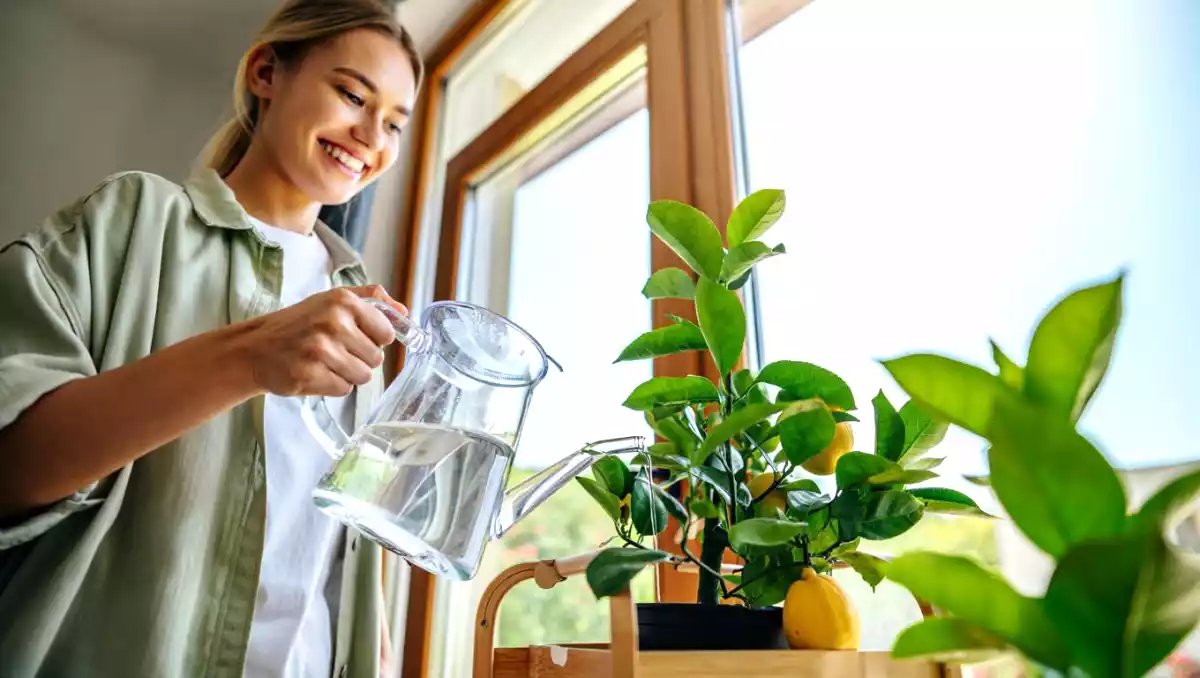How to plant and care for a lemon tree at home (even in an apartment!)

Having a lemon tree at home goes beyond aesthetics: it perfumes the environment, purifies the air and, of course, offers fresh lemons for your recipes, teas and lemonades. The good news? Even those who live in apartments can grow one successfully! Here's how:
Choosing the right species
Not all lemon trees are the same! For small environments, choose a dwarf or grafted variety, such as:
- Dwarf Tahiti lemon
- Potted Sicilian lemon
- Horse Lemon - very aromatic and hardy
These versions are adapted for pots and don't grow as tall as traditional lemon trees.
How to plant a lemon tree in a pot
1. Choosing a pot
- Ideal size: at least 15 inches/40 cm in diameter and deep.
- The pot should have holes in the bottom for the water to drain out.
- Use a small dish with pebbles or coarse sand so that it doesn't accumulate stagnant water (prevents mosquitoes).
2. Drainage layer
- Place stones, expanded clay or shards of tile at the bottom.
- Cover with a drainage blanket (or TNT).
3. Ideal substrate
Mix:
- 1 part vegetable soil
- 1 part organic compost
- 1 part sand or perlite (to ensure drainage)
4. Planting
- Plant a seedling bought from a nursery or a branch that has already taken root.
- Press the soil down lightly and water carefully.
Light and ideal location
- Lemon trees need direct sunlight for at least 4 to 6 hours a day.
- Sunny balconies, large windows or backyards are ideal.
- If the space gets little sun, supplement it with an LED grow light.
Just the right amount of water
- Water whenever the soil is dry to a depth of 1.2 inches/3 cm (test with your finger).
- Avoid soaking - lemon trees don't like "wet feet".
- On hotter days, it may be necessary to water more than once a week.
Fertilization
To grow well and produce fruit, lemon trees need nutrients:
- Every 40 days: use organic fertilizer focused on fruit trees (or NPK 10-10-10).
- Include crushed eggshells or bone meal for calcium.
- Dried coffee grounds can be mixed into the substrate from time to time.
Pruning and care
- Prune dry or diseased branches with clean pruning shears.
- When young, direct growth by removing branches that are too lateral.
- Always remove leaves or branches that touch the ground.
Common pests and how to avoid them
Keep an eye out for:
- Aphids and mealybugs: remove with absorbent cotton and diluted neutral soap.
- Ants: can be a sign of aphids. Use natural barriers or cinnamon powder on the soil.
- Yellowing leaves: may indicate a lack of sun or excess water.
When does it start to bear fruit?
- A grafted lemon tree can start producing in 1 to 2 years.
- The first fruits are usually few, but they already signal a healthy crop.
- Harvest the lemons when they are firm and vibrantly colored.
Extra tip: growing with seeds? Only with patience!
You can grow lemons from seeds, yes - but the process is longer and the plant doesn't always bear fruit well. If you want to guarantee success, start with a grafted seedling.
How about growing your own lemon tree at home too?
Growing a lemon tree at home is pleasurable, aromatic and productive. With sun, just the right amount of water and a little patience, in a few months you can harvest your own lemons - straight from the pot to the glass!
 Mirella Mendonça
Mirella Mendonça
Comments